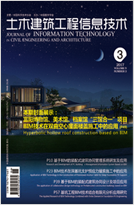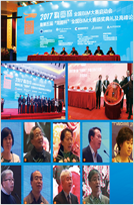Citation:
Luo Yuan, Ren Aizhu. Summarization of Virtual Reality in Pedestrian Traffic Safety Education. Journal of Information Technologyin Civil Engineering and Architecture,
2011, 3(1): 97-101.

2011, 3(1): 97-101.
Summarization of Virtual Reality in Pedestrian Traffic Safety Education
Institute of Risk Prevention & Reduction in Tsinghua University, Beijing 100084, China |
This paper discussed the significance and appropriation for Virtual Reality applying in traffic safety education for pedestrian and compared VR with multimedia technique. Then relevant researches all over the world were introduced and some disadvantages of VR now using in pedestrian traffic safety education were concluded. At the end the future trend of VR in this area is prospected.
| [1] | |
| [2] | |
| [3] |
Emmanuel Fokides, Costas Tsolakidis. Virtual Reality in Education: A Theoretical Approach for Road Safety Training to Students. European Journal of Open, Distance and E-Learning, 2009. |
| [4] |
Thomson J., Tolmie A., Foot H., McLaren B..Child Development and the aims of road safety education. Department of Transport, Road Safety Report No.1, 1996. |
| [5] |
Sandels S., .Children in Traffic.London: Elek, 1975. |
| [6] |
Jonassen D. H.. Thinking technology: Toward a constructivist design model. Educational Technology, 1994, 34(4):34-37. |
| [7] |
Winn, W..A Conceptual Basis for Educational Applications of Virtual Reality. Human Interface Technology Laboratory, Report No. TR-93-9, 1993. |
| [8] |
JODIE M. PLUMERT, JOSEPH K. KEARNEY, JAMES F. CREMER, and KARA RECKER.Distance Perception in Real and Virtual Environments. ACM Transactions on Applied Perception, 2005, 2(3):216-233.doi: 10.1145/1077399 |
| [9] |
Robert J.Matheis, Ph.D., Maria T. Schultheis, Ph.D., Lana A. Tiersky, Ph.D. John DeLuca, Ph.D., Scott R. Millis, Ph.D., Albert Rizzo, Ph.D.. IS LEARNING AND MEMORY DIFFERENT IN A VIRTUAL ENVIRONMENT. Virtual Learning, 2005:1-36. |
| [10] |
DENISE REID, Ph.D..Virtual Reality and the Person-Environment Experience. CYBERPSYCHOLOGY & BEHAVIOR, 2002, 5(6):559-564. |
| [11] |
David C. Schwebel, Joanna Gaines, Joan Severson. Validation of virtual reality as a tool to understand and prevent child pedestrian injury. Accident Analysis and Prevention, 2008, 40:1394-1400.doi: 10.1016/j.aap.2008.03.005 |
| [12] |
Gordon Simpson, Lucy Johnston, Michael Richardson.An investigation of road crossing in a virtual environment. Accident Analysis and Prevention, 2002, 35(2003):787-796. |
| [13] |
Melinda Congiu, Michelle Whelan, Jennifer Oxley, Angelo D'Elia, Judith Charlton & Brian Fildes. Crossing roads safely: The effects of training on improving children's road crossing decisions, 2006. |
| [14] |
McComas, J., MacKay, M., Pivik, J..Effectiveness of virtual reality for teaching pedestrian safety. Cyberpsychology and Behavior, 2002, 5:185-190.doi: 10.1089/109493102760147150 |
| [15] |
Simpson, G., Johnston, L., Richardson, M.. An investigation of road crossing in a virtual environment. Accident Analysis and Prevention, 2003, 35:787-796.doi: 10.1016/S0001-4575(02)00081-7 |
| [16] |
Thomson, J.A., Tolmie, A.K., Foot, H.C., Whelan, K.M., Sarvary, P., Morrison, S..Influence of virtual reality training on the roadside crossing judgments of child pedestrians. Journal of Experimental Psychology, 2005, 11:175-186. |
Metrics
- PDF Downloads(9)
- Abstract views(990)
- HTML views(671)


















